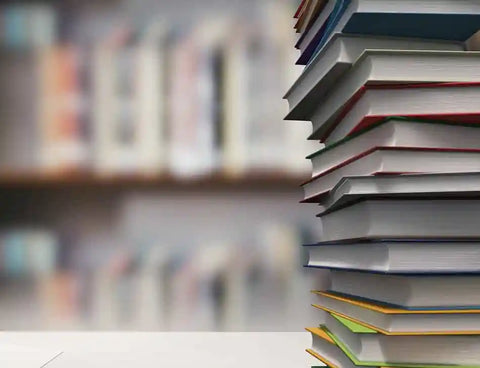Responding to Peer Reviewer Comments: A Free Example Letter
Responding to the comments peer reviewers offer when they assess your research paper can be as challenging as writing the original manuscript, especially when the necessity of revising your paper to resolve problems is considered as well. How you respond to the criticism you receive can have a significant impact on whether your paper will ultimately be published or not, so getting your letter right is imperative. Although the process of responding, revising and perhaps responding and revising yet again can be frustrating and time consuming, it is important to remember that you, the journal editor with whom you are communicating and the peer reviewers who are assessing your writing and research are all working toward the same goal – the timely publication of an excellent research paper. A professional collegial approach that adopts a courteous and objective tone to deal clearly and thoroughly with every detail and issue will make the work of the editor and reviewers more efficient and the publication cycle as a whole smoother and more successful. Your prose should, of course, be formal and correct in every way, so do read and polish your response until every sentence is as clear, accurate and precise as you can make it.
Since each response letter to reviewer comments is unique, the letter below can only serve as a constructive example as you craft your own response. The names, titles, contact information and publishing situation used in this letter are entirely fictional, but the principles and procedures are realistic and sound. The complete date and full mailing addresses are used in the style of a traditional business letter despite the assumption of an email format. You may or may not want to adopt this approach, but do be sure to provide your current contact information and the name of the editor you are addressing (normally the editor who sent you the decision letter), his or her title and the title of the journal. The subject line above the salutation is not strictly necessary unless requested in the editor’s or journal’s instructions, but if the journal has given your manuscript a number or another form of reference, do include it. The way in which changes should be made and the revised manuscript submitted vary among journals and proofreaders. This letter assumes that the authors have been asked to mark changes by using red font and resubmit their revised manuscript with their response via email, but do check guidelines and the decision letter you received for the requirements for your responses and revised manuscript, including any information on deadlines.
Keep in mind as you write that not just the editor but all of the reviewers may end up seeing everything you have written. Editors may cut and paste and share your responses as they see fit to achieve the results they envision for your paper, so be prepared for this possibility. You should definitely address each of the reviewers individually as you respond to his or her comments, aiming for a layout that makes it absolutely clear which comment you are responding to at any given moment and exactly what you have changed in your manuscript. Some authors use different fonts and colours to distinguish reviewer comments from author responses and changes, but do be aware that these features can be lost in online formats, so a Word document or pdf file would be a more reliable choice for such formatting. Do not hesitate to repeat information as necessary, incorporating small adjustments geared at the person you are addressing in each case (the discussion of Table 1 in the letter below is an example of this), but remember not to write anything to one reviewer that you would not want another one to read. If there are matters of a particularly sensitive nature that you wish to communicate to the editor only, be sure to discuss them in a separate document that is clearly not intended for reviewer eyes.
Finally, do not neglect to thank the editor and reviewers for their observations and comments. Their time is precious and many comments on your manuscript mean that they have dedicated a significant portion of it to help you improve your work. Be careful not to overstate your gratitude, however, and risk the impression of hollow flattery. Thoughtful attention to each of the observations and suggestions your reviewers offer will repay their efforts far more effectively.
A Sample Response to the Comments of Peer Reviewers
Edward Researcher
Palaeography Institute
1717 Writer’s Lane
South River, MI, USA, 484848
734-734-7344
edresearcher@palaeographyinstitute.edu
Dr Helen Wordsmith
Assistant Editor
Journal of the Shipping Manuscripts Society
717 Reader’s Row
London, UK, SW6 9DE
hwordsmith_ae@jsms.co.uk
November 14, 2017
Subject: Revision and resubmission of manuscript JSMS 17-N6688
Dear Dr Wordsmith,
Thank you for your letter and the opportunity to revise our paper on ‘Hidden Treasure: Scribal Hands in the Notorious Brigantine Manuscript.’ The suggestions offered by the reviewers have been immensely helpful, and we also appreciate your insightful comments on revising the abstract and other aspects of the paper.
I have included the reviewer comments immediately after this letter and responded to them individually, indicating exactly how we addressed each concern or problem and describing the changes we have made. The revisions have been approved by all four authors and I have again been chosen as the corresponding author. The changes are marked in red in the paper as you requested, and the revised manuscript is attached to this email message.
Most of the revisions prompted by the reviewers’ comments are minor and require no further explanation than what appears in my responses below, but I did want to bring Table 1 to your attention. This table lists, locates and briefly describes each of the hands we have separated from the many found in the Brigantine Manuscript, dated at least approximately and, in the case of the Pantofola di Seta’s first mate, identified with certainty. It does not list hands and scripts about which we remain uncertain, and for this reason Reviewer 1 suggests that it be removed and the descriptions of hands that it contains used to lengthen the descriptions in the main text of the paper. Reviewer 2, on the other hand, would like to see the table longer, with all possible hands and scripts included and tentative dates provided wherever possible. We considered both solutions and finally decided on a longer table as a tool that sets the information out clearly and comparatively. Our assumption is that readers will more readily return to a table when seeking information on the manuscript’s scribes and production. This allowed us to shorten and simplify the discussion of scribal characteristics in the main text of the paper, but it has resulted in a larger table, so we are eager to know your perspective on the matter. Although comments from both reviewers suggest that our original approach was not as successful as we would have liked, the table could easily be removed as per Reviewer 1’s advice and the text lengthened instead if that would be preferable. In fact, we tried the revisions that way at first and would be happy to send that version along as well if it might be helpful.
In response to your comments on the abstract, we have toned down the codicological and palaeographical terminology aimed at manuscript specialists and played up the new certainty that this book belonged to real pirates and was treated as the Pantofola di Seta’s log by a first mate who was very proud of the crew’s achievements. Those opening sentences you mentioned now read: ‘Like the pirates whose barbaric activities it celebrates, the Brigantine Manuscript slipped off into the fog in the early fourteenth century, finally emerging in 2015. It had been miraculously preserved for 700 years in a hidden chamber carved into the keelson of a recently excavated Mediterranean brigantine named Pantofola di Seta (the Silk Slipper). Extensive examination of the book’s contents and scripts has now lifted more of that fog, revealing at least five distinct hands writing over a period of more than 80 years and one of them a rather gifted first mate – Benutto Nero – who logged daily entries in passable Latin for almost six years from 1282 to 1288.’ We hope you agree that this opening is much more engaging, particularly for non-specialist readers, but we are certainly happy to make further changes to the abstract.
Regarding more minor matters, we have now changed our spelling and phrasing patterns from American to British English. I apologise for neglecting that requirement in the author instructions when we originally submitted the manuscript. We have also made good use of the two articles you mentioned. Susan Goodorder’s paper did indeed help us refine the subsections and their headings in the discussion section of our manuscript, and General Saltydog’s glossary of nautical terms enabled us to use more appropriate language when discussing ships and seamanship – ‘ropes,’ for instance, are now ‘lines’ throughout and we are much clearer on terms such as ‘leeboard,’ ‘starboard’ and ‘sheet.’
We hope the revised manuscript will better suit the Journal of the Shipping Manuscripts Society but are happy to consider further revisions, and we thank you for your continued interest in our research.
Sincerely,
Edward Researcher
Edward Researcher
Professor of Medieval Latin
Palaeography Institute
Reviewer Comments, Author Responses and Manuscript Changes
Reviewer 1
Comment 1: ‘Hidden Treasure: Scribal Hands in the Notorious Brigantine Manuscript’ was an engaging and informative read and the authors’ assessment of hands and scripts clear and accurate. The paper is perfect for the Journal of the Shipping Manuscripts Society. I am uncertain that Table 1 is necessary and I have discovered one grammatical error which unfortunately appears throughout the manuscript and must be repaired, but beyond that I have very little helpful commentary to offer.
Response: Thank you! We found your comments extremely helpful and have revised accordingly.
Comment 2: Table 1 does not contain all the scripts and hands discussed in the paper, so it seems incomplete. I preferred the lengthier descriptions in the main text and would recommend that the table be removed and the descriptions of the more certain hands it contains be used to lengthen those descriptions in the main text.
Response: Both you and the other reviewer commented on this table, so we are grateful to know that our current approach requires some rethinking. Unfortunately, your suggestions differ, with the second reviewer asking that Table 1 be lengthened to include all hands and scripts in the manuscript. We have considered both solutions and decided to keep Table 1, but we have also asked the assistant editor, Dr Wordsmith, for her feedback on this issue and are certainly willing to remove the table as you suggested if that proves best for the paper and the journal.
Changes: We lengthened the table by adding the rest of the hands and scripts we have detected in the manuscript, describing each briefly and offering an approximate date. We believe this sets the information out clearly and comparatively and is a format that readers will readily return to when seeking information on the manuscript’s scribes and production. We have not removed the descriptions of hands and scripts that you found useful in the main text, but lengthening the table has allowed us to shorten and simplify the overall discussion of scribal characteristics in the main text of the paper. The changes in both table and text appear in red type in the revised paper.
Comment 3: Grammar and sentence structure is adequate for the most part, but dangling modifiers are a problem throughout the paper and at times obscure the authors’ meaning. For example, this sentence appears on p.6: ‘With his entrails already tumbling out on the deck, the oarsman gave his victim a last kick and lopped his head off.’ I’m almost certain that the intention here is to suggest that the victim, not the attacking oarsman, is suffering loss of entrails, but that is not what the sentence says. Here and elsewhere corrections are required.
Response: Thank you so much for catching these glaring and confusing errors, which we have now corrected.
Changes: We have gone through the entire manuscript carefully and adjusted every relevant sentence to avoid dangling modifiers and clarify our meaning. For example, the sentence you noted now reads: ‘The oarsman waited until his victim’s entrails were tumbling out on the deck before he gave him one last kick and lopped his head off.’ This and other revised sentences are marked in red in the revised manuscript.
Reviewer 2
Comment 1: It is clear that the authors know a good deal more about medieval manuscripts than about seamanship, but the manuscript is worthy of publication provided the following matters are addressed.
Response: Thank you for your assessment. We are indeed manuscript specialists who are learning more about ships and the sea via our studies of the Brigantine Manuscript.
Comment 2: There seems to be some confusion in the paper about the meaning of ‘leeboard’ and ‘starboard’ and more generally I’d like to see more accurate nautical terminology used. I wouldn’t recommend the more obscure vocabulary of vessels and seamanship which the authors are unlikely to need in any case, but the most common applicable terms should certainly be used. ‘Ropes’ should be ‘lines,’ ‘back’ of the boat should be ‘stern’ and so on.
Response: We agree that better use of nautical terminology would be more accurate and precise and have taken your advice.
Changes: We consulted the nautical glossary compiled by General Saltydog that was recommended by the assistant editor, Dr Wordsmith, and improved or corrected every ambiguous or inaccurate term we detected. Each changed word is marked in red in the revised paper, and we would be happy to make further alterations.
Comment 3: Table 1 seems too selective. It is obviously easier to include only those hands that the authors are certain about, but I would like to see a complete list of hands and scripts along with the authors’ best guesses at possible dates. I suspect many of the journal’s readers, especially those who are not manuscript specialists, would prefer this information in an effective tabular format.
Response: Thank you for reminding us how important it is to present complex material like details of hands and scripts in a concise and readily accessible way. We agree that the table would be better if it included all hands in the manuscript and have made the following changes.
Changes: We lengthened the table by adding the remaining hands and scripts, describing each briefly and offering an approximate date. We believe this sets the information out clearly and comparatively and is a format that readers will return to when seeking information on the manuscript’s scribes and production. We have not entirely removed the descriptions of hands and scripts from the main text of the paper, but lengthening the table has allowed us to shorten and simplify the overall discussion of scribal characteristics in the main text. The changes in both table and text appear in red type in the revised paper.
Comment 4: The formatting of the discussion section seems inconsistent with the preceding sections of the manuscript and the journal’s guidelines. The discussion itself follows a logical line of reasoning for the most part and presents persuasive interpretations and conclusions, but it is a little complex at times, so more divisions and a more defined system of organisation would be helpful.
Response: Thank you for this excellent observation. The discussion section is a little dense at times and could use more structure and clear guidance for the reader.
Changes: We have added a number of subsections with informative headings that summarise key points in the discussion. We used as a model an article published by the Journal of the Shipping Manuscripts Society and recommended by Dr Wordsmith, and we believe that the argument is clearer as a result, but we would welcome comments on particular sections and headings if you have further concerns. The new material is marked in red in the revised paper.
Why Our Editing and Proofreading Services?
At Proof-Reading-Service.com we offer the highest quality journal article editing, dissertation proofreading and online proofreading services via our large and extremely dedicated team of academic and scientific professionals. All of our proofreaders are native speakers of English who have earned their own postgraduate degrees, and their areas of specialisation cover such a wide range of disciplines that we are able to help our international clientele with research editing to improve and perfect all kinds of academic manuscripts for successful publication. Many of the carefully trained members of our manuscript editing and proofreading team work predominantly on articles intended for publication in scholarly journals, applying painstaking journal editing standards to ensure that the references and formatting used in each paper are in conformity with the journal’s instructions for authors and to correct any grammar, spelling, punctuation or simple typing errors. In this way, we enable our clients to report their research in the clear and accurate ways required to impress acquisitions proofreaders and achieve publication.
Our scientific proofreading services for the authors of a wide variety of scientific journal papers are especially popular, but we also offer manuscript proofreading services and have the experience and expertise to proofread and edit manuscripts in all scholarly disciplines, as well as beyond them. We have team members who specialise in medical proofreading services, and some of our experts dedicate their time exclusively to dissertation proofreading and manuscript proofreading, offering academics the opportunity to improve their use of formatting and language through the most exacting PhD thesis editing and journal article proofreading practices. Whether you are preparing a conference paper for presentation, polishing a progress report to share with colleagues, or facing the daunting task of editing and perfecting any kind of scholarly document for publication, a qualified member of our professional team can provide invaluable assistance and give you greater confidence in your written work.
If you are in the process of preparing an article for an academic or scientific journal, or planning one for the near future, you may well be interested in a new book, Guide to Journal Publication, which is available on our Tips and Advice on Publishing Research in Journals website.








